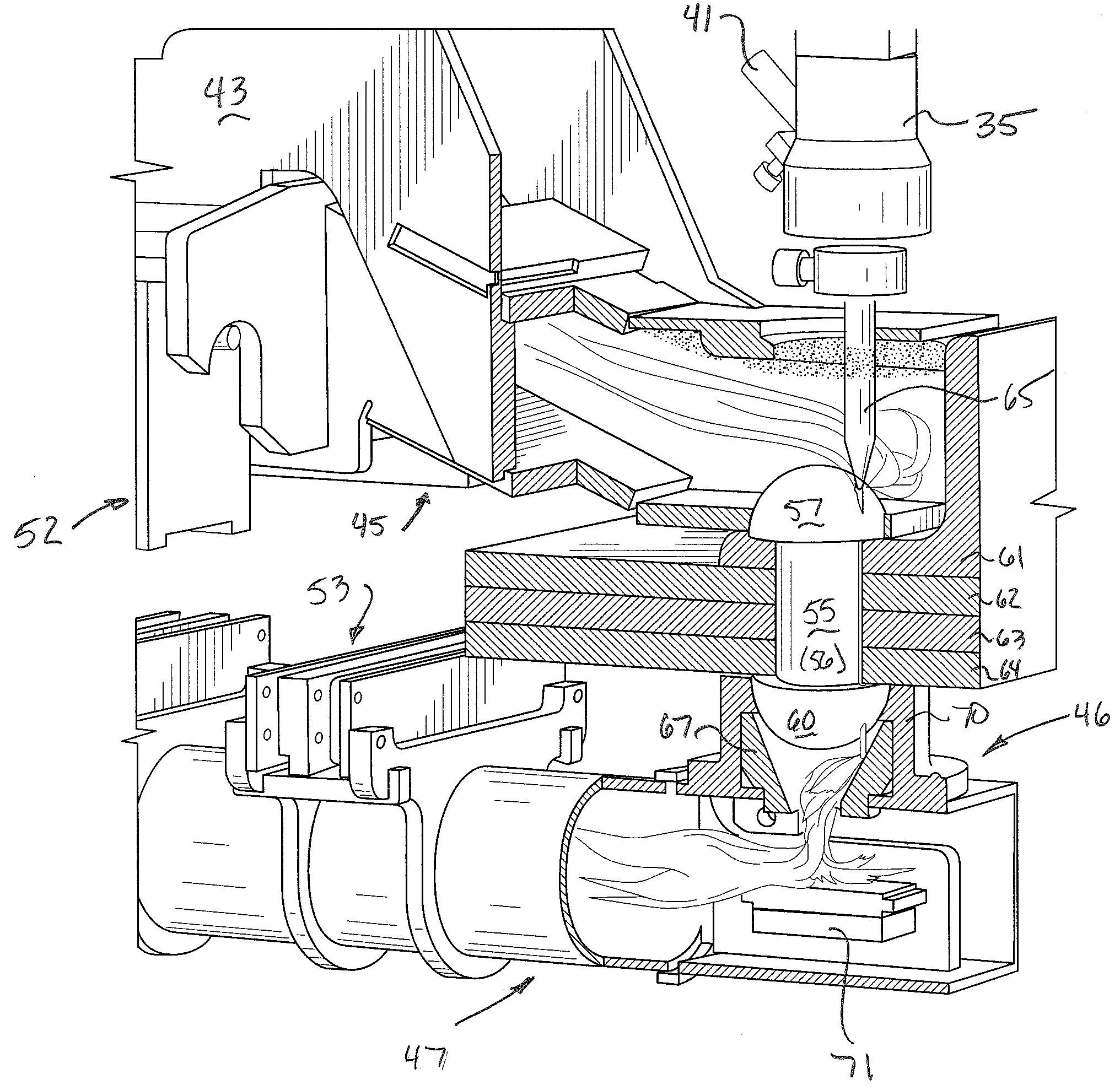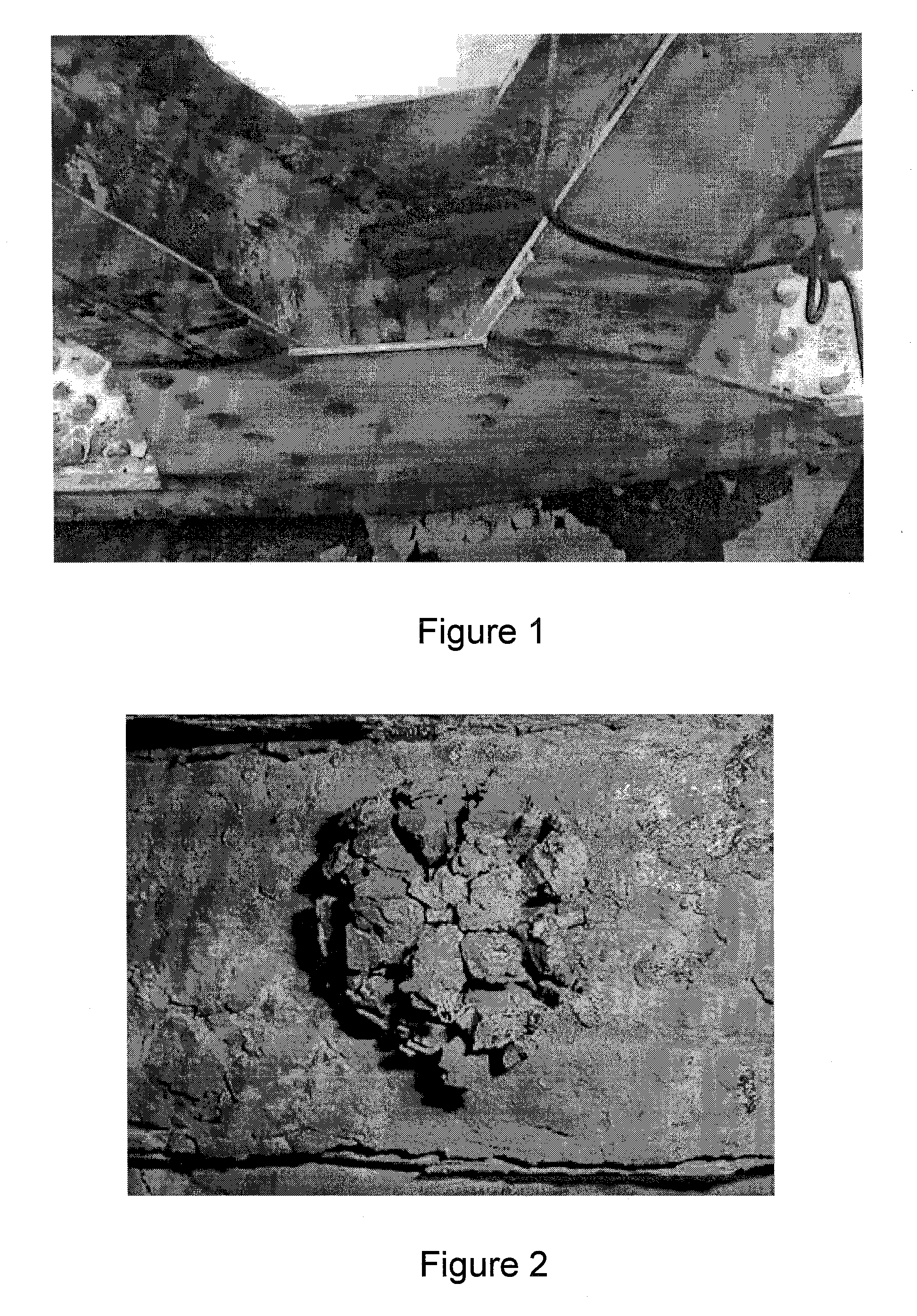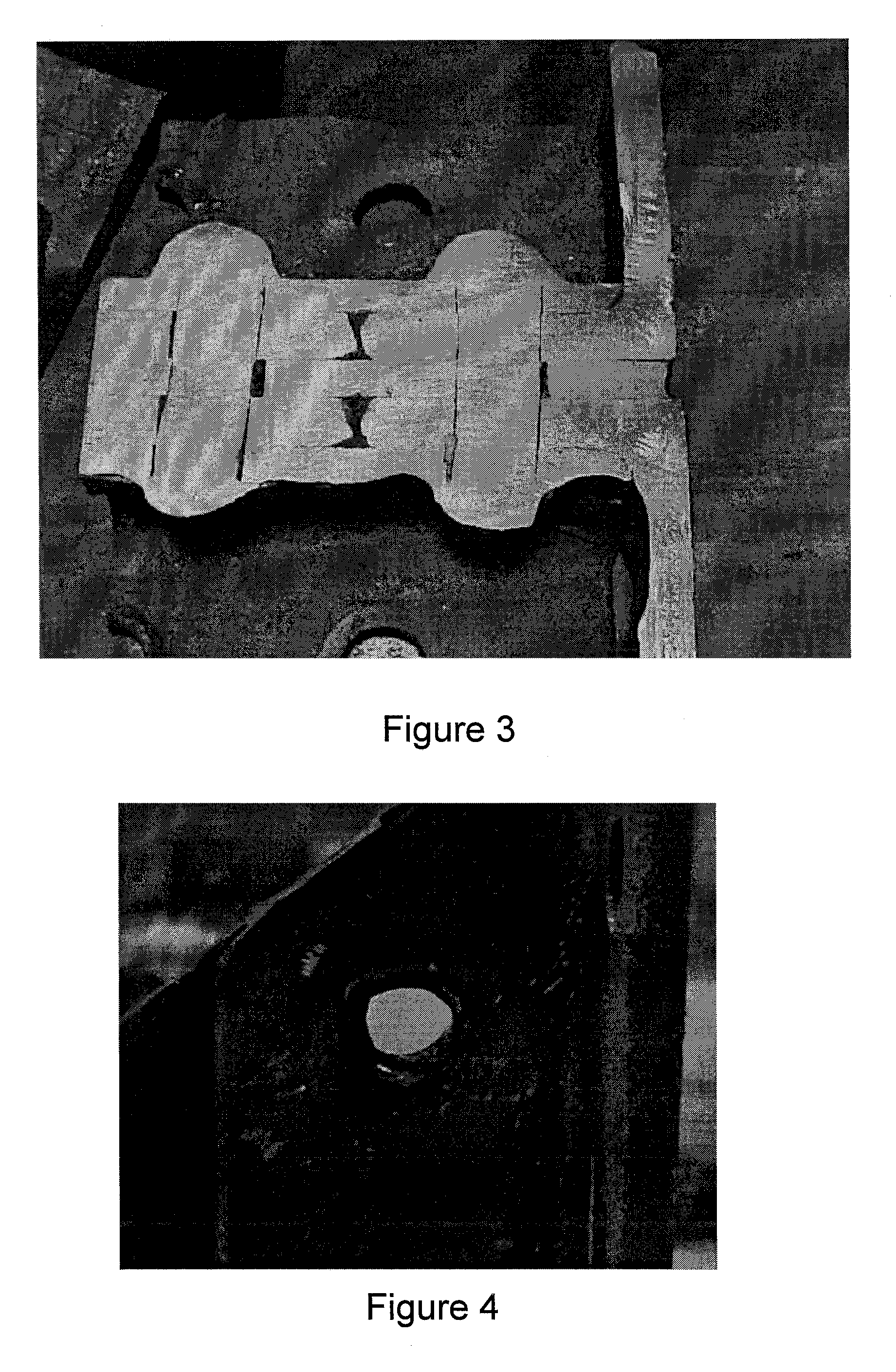Method and apparatus for rivet removal and in-situ rehabilitation of large metal structures
a metal structure and rivet removal technology, applied in metal working equipment, metal-working equipment, manufacturing tools, etc., can solve the problems of high uncertainty in the effort, time and cost of rivet replacement, and the current rivet removal method is generally unsatisfactory, so as to reduce or eliminate the fluting of the resulting hole
- Summary
- Abstract
- Description
- Claims
- Application Information
AI Technical Summary
Benefits of technology
Problems solved by technology
Method used
Image
Examples
Embodiment Construction
[0050]FIGS. 7 through 15 illustrate a number of aspects of the invention. In a first aspect, the invention is an apparatus for cutting structural components in-place without releasing displaced materials, including lead paint and other potentially hazardous materials. FIG. 7 illustrates such an apparatus in one aspect in which the structural component is illustrated as a first girder 30, a second girder 31, and a reinforcing ply 32. As illustrated in FIG. 7, a rivet 33 joins the first girder 30 to the ply 32. It will be understood, of course, that a number of other rivets typically join such pieces together, some of which are illustrated at 34 in FIG. 7.
[0051] The cutting apparatus includes a water jet cutting head 35 the nozzle of which is not visible in the view of FIG. 7. The water jet cutting head is positioned on a first face of the joined metal components 31, 30, and 32 for cutting into and through the components with the high-pressure water jet, which preferably carries an a...
PUM
| Property | Measurement | Unit |
|---|---|---|
| perimeter | aaaaa | aaaaa |
| perimeter shape | aaaaa | aaaaa |
| pressure | aaaaa | aaaaa |
Abstract
Description
Claims
Application Information
 Login to View More
Login to View More - R&D
- Intellectual Property
- Life Sciences
- Materials
- Tech Scout
- Unparalleled Data Quality
- Higher Quality Content
- 60% Fewer Hallucinations
Browse by: Latest US Patents, China's latest patents, Technical Efficacy Thesaurus, Application Domain, Technology Topic, Popular Technical Reports.
© 2025 PatSnap. All rights reserved.Legal|Privacy policy|Modern Slavery Act Transparency Statement|Sitemap|About US| Contact US: help@patsnap.com



